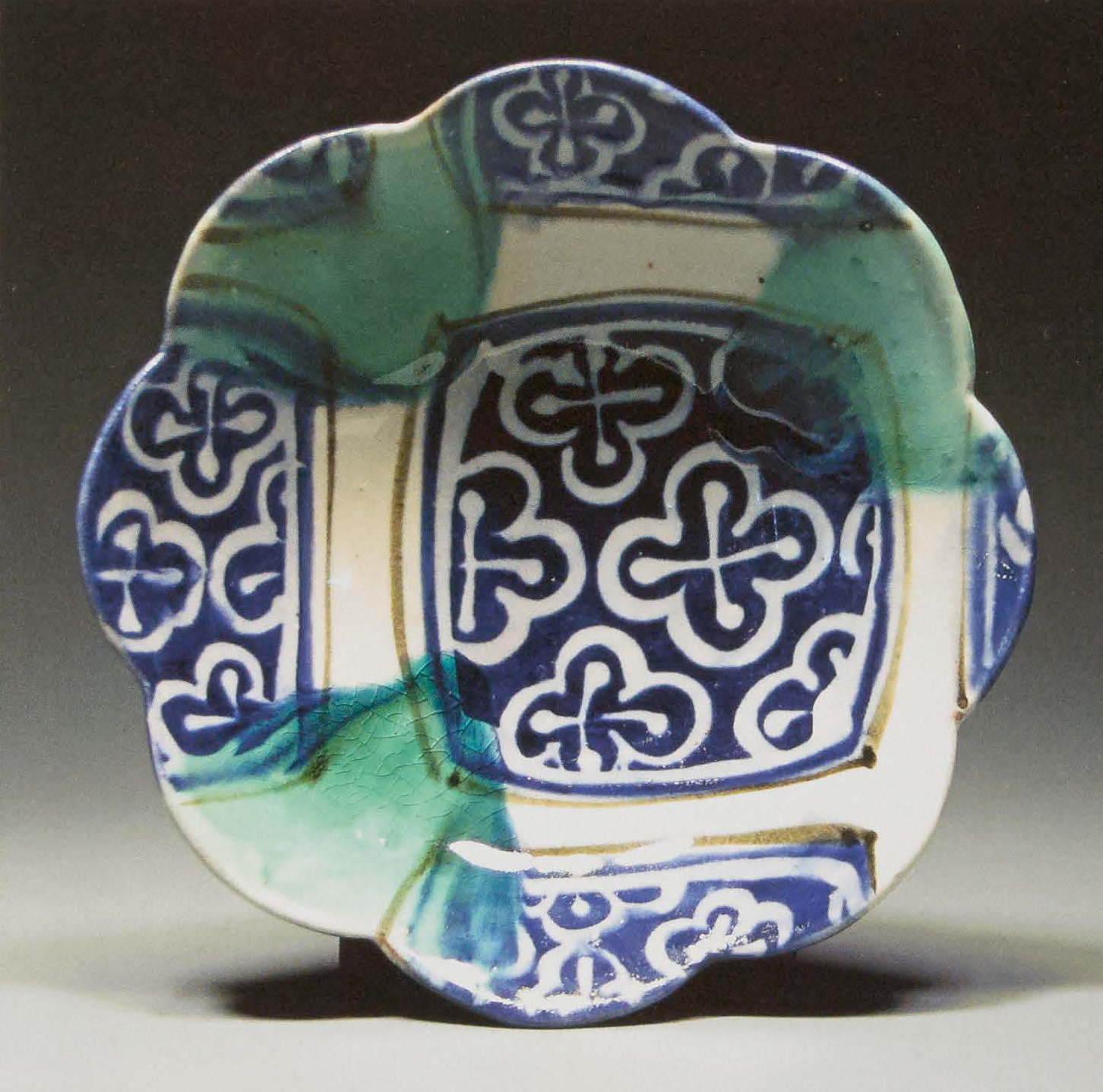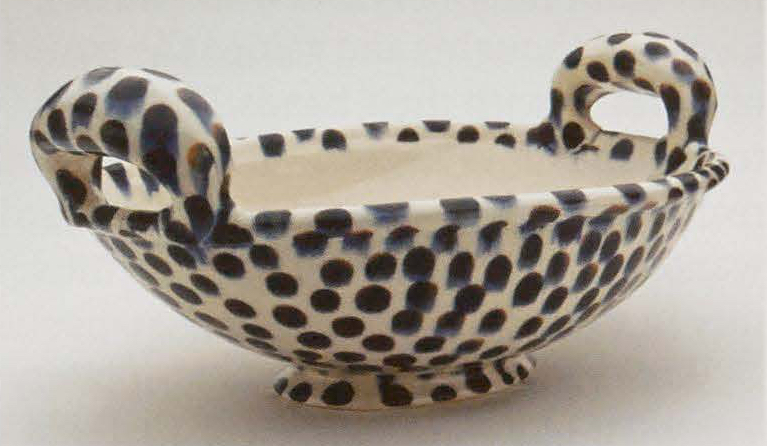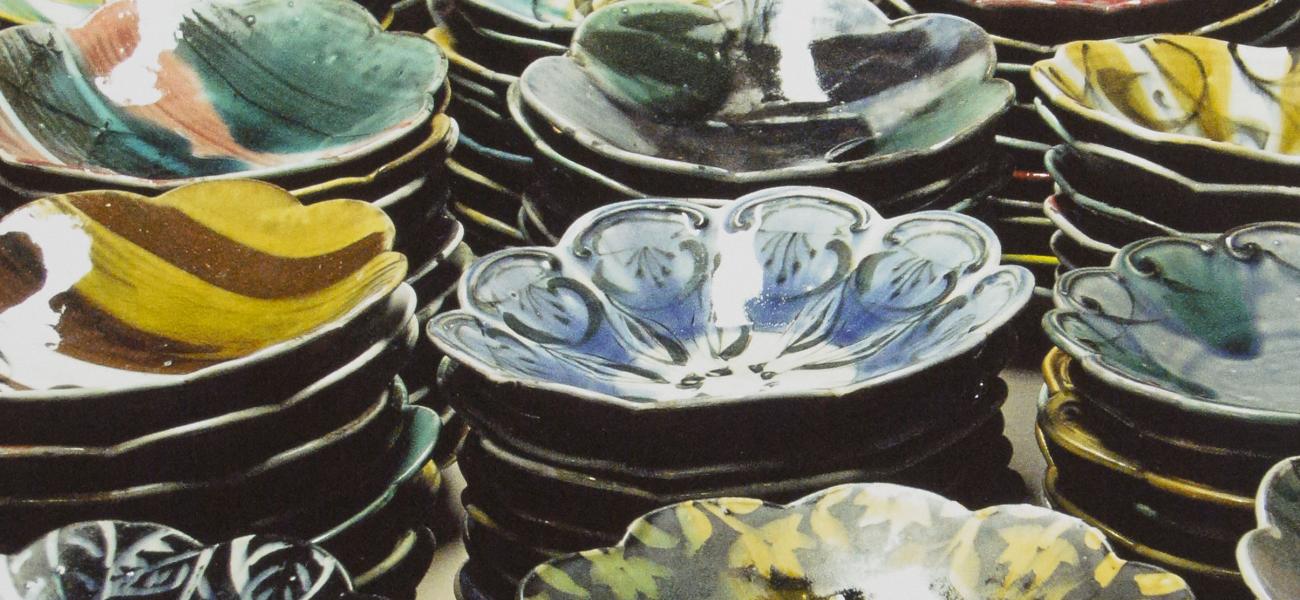Iteration
For a potter, repetition is routine. Making pots over and over again is how I come to understand them. However, it's not without its tedious side, and it's a challenge to balance between discovery and monotony. There are instances when they become indistinguishable and the only course is to change the way you think about working, rather than changing the way you work.
In 2009 I encountered this difficulty when I was selected to make five hundred plates during a three-month residency at Watershed Center for Ceramic Arts in Maine. These plates were to be displayed, sold, and used by patrons during the "Salad Days" fundraising event the following summer. Three months is just about enough time to make the plates but not much else. Some residents might insist on making "their own work" in addition to the overwhelming volume of plates. But I made the decision early on that I would use this opportunity to focus on a decorative vocabulary, thinking that this assignment (which I would never have assigned myself) could facilitate my research tremendously.
I planned for each plate to be a test tile, and by adopting this method, I worked through an incredible amount of decorative information in that short period. This required me to suspend my expectation that I would have a physical product at the end of the residency. The salad plates would belong to Watershed, but the knowledge acquired through the process would be mine.
Surface decoration had been a thematic interest of mine in grad school, but one that I stumbled over and muddled through in my thesis work, never reaching a point of real satisfaction or resolution with the results. I had applied for the residency because I was suffering post-grad-school traumatic stress disorder (or PGSTSD) and needed a defined set of parameters for my studio work in order to avoid "analysis paralysis."
The residency seemed to fit the bill, and in the first weeks of making plates, my strategy developed. First I worked on the form of the plates, assessing their role (for my purposes) as canvases. It was a straightforward shape, somewhere between a plate and a shallow bowl, with a lobed rim and robust foot. Time constraints were a consideration, so only the interiors would receive decoration on a white slip background. The undersides were covered with a terra sigilatta made from the local clay for a tactilely pleasing but unfussy finish. My decoration would be restricted to techniques I was familiar with but wished to become more proficient in. This included resist techniques with shellac, pattern painting, and free-hand brushwork. I used underglazes and a single base glaze with oxide additions for my color and line work. The underglaze pigments were basically straight out of the bottle, which allowed an immediate application on greenware, with multiple layers of shellac resist to create the designs.
The glaze was poured, dipped, or blobbed on to fill in patterns or to add an element of chance movement to the interiors. My work cycle evolved into what I thought was a slightly grueling but manageable system. I would throw forty plates on the first day, then trim them and apply slip and sigillata on the second day. The following three days were for drying and decorating, adding up to about five days of working, with rest on the sixth and/or seventh day to keep up my morale. I repeated this cycle about fourteen times and made approximately 560 plates.
The work cycle defined the nature of my decorative explorations. The surfaces for each group of forty plates were informed by the preceding group and had their own patterns and motifs, resulting in families of pots, related but distinct. I was able to achieve an incredible variety within the parameters I set for myself.
At the outset, this decorative smorgasbord of influences was drawn from the historical pottery of Islam and Western Europe, including traditions as varied as sixteenth-century Italian Maiolica and the Iznik pottery of the Ottoman Turks.
I particularly loved the dynamic surfaces of Persian and Syrian fritware. I read texts on decorative history, such as Owen Jones's The Grammar of Ornament, and on decorative theory in E.H. Gombrich's A Sense of Order. Textiles from Japan and Africa, Asian and Islamic calligraphy, Abstract Expressionist painting: everything I could digest was a potential source. In my studies, I was careful to observe the spatial relationships between density and movement, and pattern and texture.
With all this material it was quite apparent to me that I had an inexhaustible well to draw from but needed to edit and reduce what would actually appear on the pots. I started by identifying specific elements in the historical sources I was attracted to. In some cases, it was the way a glaze would run across the surface of a pot and pull or streak the colors; sometimes it was the deliberate juxtaposition of patterns and layers on objects or the lyrical movement of an ink line over paper. As a result of my editing process, the quality of the visual information I included on each plate improved, and I was able to pinpoint how I wanted the surface to interact with the pot.
I cycled through a huge volume of ornament to construct combinations of decorative motifs for each work cycle. At first these combinations referenced my influences directly, but then they became distillations of influences instead of derivations. What developed through these multiples was a decorative vocabulary I had always wanted to possess but had never made the time to realize. This process of making editions in multiples of forty, combined with the time constraints, condensed a year's worth of research into a few months. It caused my work to move forward at a much faster pace, but the more interesting result is that now I think through my work in a much more nuanced way. And I have developed a sensibility that is based on cultivating self-expression within the context of utility.
This experience continues to affect my studio practice in some very profound ways. I still work in series and use the results of permutations to inform the next cycle of work. At the conclusion of each work cycle, I step back and assess the completed pots in order to understand what is successful in each piece and what may still need tweaking. I rarely repeat previous decorative solutions exactly, instead preferring to alter them bit by bit until they more closely align with my aesthetic intentions. I continue to learn how I want decoration to function on my pots. I think of decoration and form as analogous to languages, communication founded on the interaction of hand and eye. And as with any language, communication encompasses both incredibly abstract concepts and utilitarian necessities. In conventional forms, such as cups, bowls, and plates whose surfaces are decorated with pattern, there are an inherent approachability and familiarity in the work that users find comforting and beautiful. The indelibility of ceramic materials and the alchemy of firing give me the sense that decorating is not about clothing or covering the pot, but about extending the experience of utility into a visual dimension, one that imposes an ancillary sense of order to the object, and thus to the space around it.

